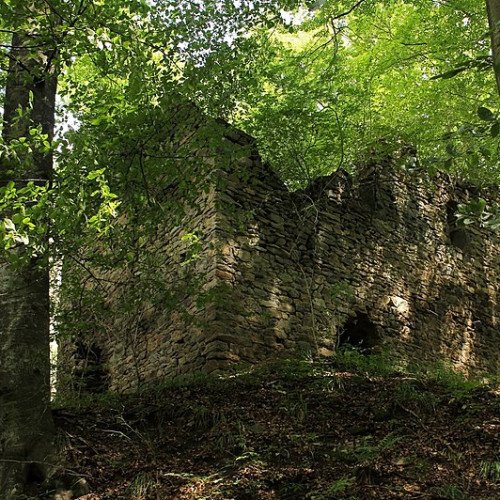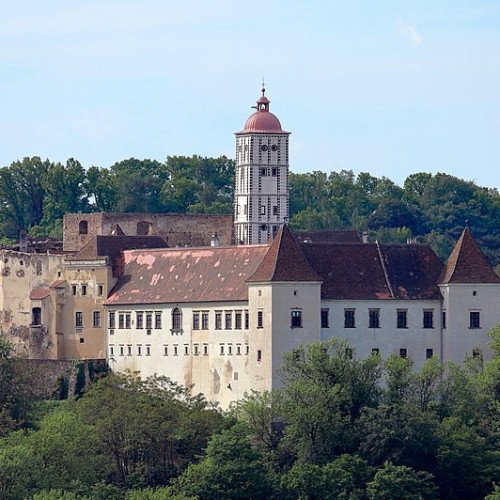Castles of "Austria" RUNDERSBURG CASTLE vs SCHALLABURG CASTLE

RUNDERSBURG CASTLE
Rundersburg Castle (German: Burg Rundersburg) is a ruined castle in Sankt Leonhard am Hornerwald, Lower Austria. The name of the castle was first mentioned in a deed of gift written in 1182 or 1189 which mentions Albero de Ronnenberc, a benefactor of Göttweig Abbey. The castle was used, along with the nearby Thurnberg and Idolsberg castles, to secure the Polansteig , a trade route running through the region. The lineage of the castle's owners probsbly died out with Ortolf von Roneberch in 1293, and it was acquired by the sovereign. In 1895 the castle and surrounding area was acquired by Rudolf Graf Hoyos-Sprinzenstein, a member of the Hoyos family. Today the castle is owned by Bernhard Hoyos, a descendant of Rudolf. The castle was built above the Fronbach river valley. The opus spicatum wall structure dates the castle's construction to between 1180 and 1220. There was once a square residential tower in the center of the complex, but only one wall remains of it. This tower was probably built close to the middle of the 13th century.
Statistics for this Xoptio

SCHALLABURG CASTLE
Schallaburg Castle is a castle in the village of Schallaburg in the municipality of Schollach, near the Wachau valley, Lower Austria, north of the Alps.[1] Schallaburg Renaissance Castle is 5 kilometres (3 mi) from Melk, in the region known as Mostviertel. The central part of the castle was built in the German Renaissance Age, beginning around 1540, by the Losenstein dynasty. In 1242, the castle appears in a document for the first time mentioned as fortress Schala. From the 13th to the 15th century the castle was owned by the lords of Zelking (German: von Zelking). From 1456 until 1614, castle Schallaburg was in the possession of the family von Losenstein. In the 16th century Hans Wilhelm von Losenstein renovated it into a Renaissance style, and rebuilt the church of Loosdorf into a Renaissance Lutheran church. There he also founded a Lutheran grammar school for youths of both nobility and non-nobility ('die Hohe Schule', 1574-1627). In 1601 Hans Wilhelm von Losenstein died, resulting in rested high debts on the castle. In 1614 the father-in-law of George Christoph auf Losensteinleithen, George von Stubenberg, bought the castle. In 1627 the church and school were closed according to a law issued by the archduke of Austria emperor Ferdinand II, who wished to restore the Catholic faith in Lower Austria. From the 17th century until the 20th, the castle changed owners several times. It remained private property until 1945. In 1945 it was confiscated by the Russians, and then in 1955 the castle became property of the new Republic of Austria.